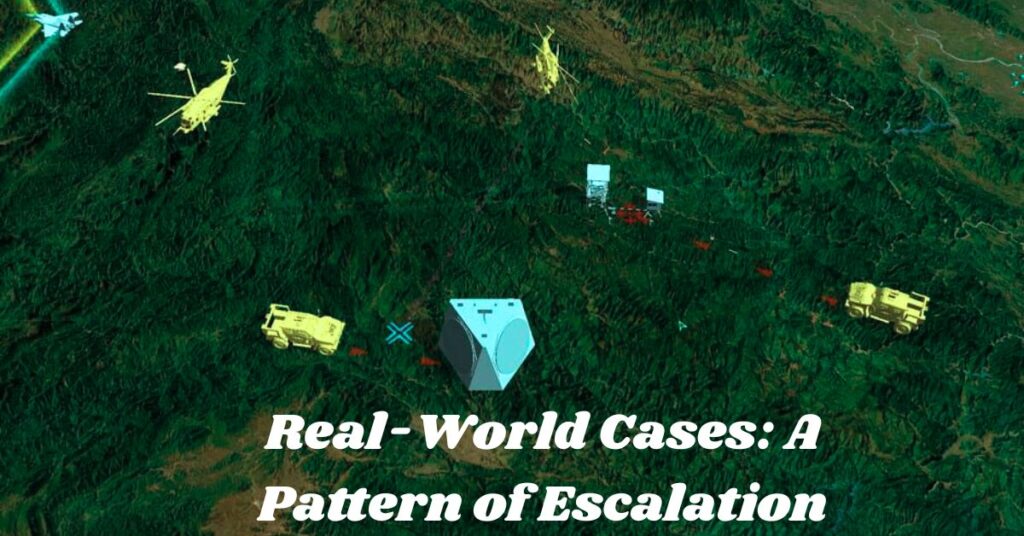Deep Nude AI represents the darkest evolution of artificial intelligence tools. This technology transforms innocent photos into explicit content without permission. The cybersecurity threat landscape has expanded dramatically in 2025. Organizations worldwide face unprecedented privacy violation concerns.
Generative Adversarial Networks power these dangerous applications. Criminals exploit machine learning algorithms for harassment and extortion. The rise of synthetic media creation threatens individual privacy and corporate security. Digital manipulation has reached terrifying new heights.
The Rise of Weaponized Generative Models
Weaponized AI has moved beyond theoretical concerns. Criminal networks now deploy automated content generation systems at scale. These tools create non-consensual imagery with devastating precision. The deep learning frameworks behind these applications are increasingly sophisticated.
Computer vision models can process thousands of images daily. Attackers use neural network training to improve output quality. Image processing technology has become accessible to malicious actors. The democratization of AI-powered image synthesis creates massive security risks.
Social media platforms struggle with malicious content detection. Traditional security measures cannot keep pace with evolving threats. Facial recognition systems are being reverse-engineered for harmful purposes. The image-to-image transformation process happens in seconds.
What Is Deep Nude AI, Technically Speaking?
Deep Nude AI uses advanced machine learning algorithms to manipulate images. The technology strips clothing from photos using artificial intelligence tools. Generative Adversarial Networks form the core architecture of these systems. Two neural networks compete to create realistic fake content.
The generator network creates synthetic nude images. The discriminator network evaluates image authenticity. This adversarial process produces increasingly convincing deepfake generation results. Computer vision models analyze body structure and clothing patterns.
Neural network training requires massive datasets of images. Criminals scrape social media for training materials. Image processing technology identifies facial features and body proportions. The AI-powered image synthesis process takes mere minutes to complete.
Common technologies powering deep nude generators:
- Stable Diffusion with fine-tuned explicit models
- DreamBooth-trained systems using scraped content
- LoRA modules targeting specific anatomical features
- Open-source GAN pipelines accessible via dark web platforms
- Mobile-friendly applications requiring minimal technical knowledge
- Pay-per-render models costing as little as one dollar per image
READ THIS BLOG: The Guide to Xossipy: An Overview, Features, and Insights
The Core Ethical Violations of Deep Nude AI
Digital consent frameworks are completely bypassed by these technologies. Victims have no control over their digital representation. Privacy violation concerns extend far beyond individual harm. Society faces fundamental questions about digital ethics compliance.
🛑 1. Non-consensual image generation
Non-consensual imagery violates basic human dignity. Victims never agreed to explicit content creation. Automated harassment tools generate images without permission. The psychological impact extends beyond the digital realm.
🧠 2. Psychological manipulation
Revenge exploitation tactics cause severe mental health issues. Victims experience anxiety, depression, and social isolation. Reputational damage assessment shows lasting career impacts. The trauma persists even after content removal.
⚖️ 3. Consent erasure in digital identity
Digital manipulation erodes trust in online content. Authentic images become suspect due to deepfake prevalence. Synthetic media creation blurs reality and fabrication lines. Personal identity loses meaning in digital spaces.
👁️ 4. Objectification at algorithmic scale
Machine learning algorithms embed dangerous gender biases. Female-presenting individuals face disproportionate targeting. Automated content generation reinforces harmful stereotypes. AI-powered image synthesis amplifies societal objectification.
The Cybersecurity Threat Landscape in 2025
Cybersecurity threat landscape analysis reveals escalating risks. Malicious content detection systems lag behind attack sophistication. Organizations face legal liability implications from employee victimization. Corporate security protocols require immediate updates.
🎯 1. AI Sextortion-as-a-Service (SaaS)
Sextortion-as-a-Service platforms operate on dark web marketplaces. Criminal organizations offer complete blackmail packages. Automated harassment tools include victim identification systems. Pre-built templates streamline extortion campaigns.
📧 2. Phishing 2.0
Phishing campaign vectors now include synthetic explicit content. Attackers bypass traditional malicious content detection systems. Deep learning frameworks create contextually relevant fake images. Email security filters struggle with AI-generated content.
🕵️ 3. State-backed disinformation campaigns
Disinformation warfare strategies target political opponents and activists. Nation-states deploy deepfake generation for character assassination. Synthetic media legislation cannot keep pace with technological advancement. International conflicts extend into digital manipulation.
🔐 4. Zero-day vector amplification
Artificial intelligence tools enhance traditional attack vectors. Computer vision models identify high-value targets automatically. Image processing technology enables sophisticated social engineering. Neural network training improves attack success rates.
📱 5. Viral weaponization on social platforms
Social media platforms struggle with rapid content proliferation. Automated content generation overwhelms moderation systems. AI-powered image synthesis creates viral fake content. Digital manipulation spreads faster than fact-checking efforts.
Legal Frameworks: Behind the Threat Curve
Synthetic media legislation remains fragmented globally. Cross-jurisdictional enforcement faces significant challenges. Legal liability implications vary dramatically between countries. Digital consent frameworks lack standardization.
The United States provides partial protection through state laws. Federal legislation addressing deepfake generation remains stalled. The European Union offers stronger privacy violation concerns protections. The United Kingdom criminalizes non-consensual imagery under harassment laws.
⚖️ Legal gaps include:
- No universal digital consent frameworks standards
- Inconsistent cross-jurisdictional enforcement mechanisms
- Difficult prosecution due to AI-generated content plausible deniability
- Insufficient victim protection measures in most jurisdictions
- Lack of synthetic media legislation addressing technological advancement
- Inadequate corporate security protocols legal requirements
Under-Reported Risks: What Other Sites Don’t Tell You
Workplace harassment incidents involving deepfake generation increase annually. Corporate security protocols fail to address internal threats. Automated harassment tools target employees within organizations. Reputational damage assessment extends to entire companies.
Content moderation policies cannot scale with threat volume. Malicious content detection systems require constant updates. AI-powered image synthesis evolves faster than defensive measures. Digital ethics compliance becomes increasingly complex.
Revenge exploitation tactics target domestic violence victims. Sextortion-as-a-Service platforms offer relationship-specific packages. Computer vision models identify intimate partner images automatically. Privacy violation concerns extend to family members.
Real-World Cases: A Pattern of Escalation

Incident response procedures reveal escalating attack sophistication. Threat intelligence feeds documents increasing frequency. Legal liability implications grow with each reported case. Victim protection measures prove inadequate against technological advancement.
📍 France, 2024:
University students discovered a deepfake generation targeting yearbook photos. Criminal networks monetized non-consensual imagery through cryptocurrency. Malicious content detection failed to prevent distribution. Cross-jurisdictional enforcement complicated investigation efforts.
📍 India, 2023:
Political activists faced disinformation warfare strategies using fake explicit images. Reputational damage assessment showed irreversible career impact. Synthetic media creation forced victims into hiding. Digital manipulation achieved political objectives despite proven falseness.
📍 USA, 2025:
Corporate executive targeted by sextortion-as-a-Service platforms using professional headshots. Automated harassment tools demanded cryptocurrency payments. AI-powered image synthesis created convincing blackmail material. Corporate security protocols failed to prevent attack success.
Defense Strategies for CISOs and Security Teams
Corporate security protocols must evolve rapidly. Threat intelligence feeds provide essential early warning systems. Incident response procedures require deepfake generation specific protocols. Digital ethics compliance becomes board-level priority.
🛡️ 1. Deepfake detection training
Machine learning algorithms can identify synthetic content artifacts. Facial recognition systems detect inconsistencies in generated images. Computer vision models analyze pixel-level manipulation signatures. AI-powered image synthesis detection improves with training data.
🧱 2. Employee vulnerability audits
Social media monitoring identifies exposed employee images. Automated content generation systems scan for potential targets. Privacy violation concerns assessment protects high-value personnel. Digital manipulation risk evaluation guides security investments.
⚠️ 3. Content policy integration
Content moderation policies must address synthetic media creation explicitly. Malicious content detection systems require deepfake generation capabilities. Workplace harassment incidents protocols need AI-specific procedures. Legal liability implications demand clear policy frameworks.
🔍 4. Legal incident protocol
Incident response procedures must preserve digital manipulation evidence. Cross-jurisdictional enforcement requires proper documentation. Victim protection measures need immediate implementation. Synthetic media legislation compliance demands legal expertise.
🧰 5. Threat Intelligence Feeds
Cybersecurity threat landscape monitoring prevents attacks. Automated harassment tools signatures enable proactive blocking. Sextortion-as-a-Service platforms tracking protects employees. Phishing campaign vectors analysis improves defenses.
ALSO READ THIS BLOG: NippyBox: The Secure, Lightweight Cloud Storage Solution for Everyday Use
Educational Campaigns: The Role of Responsible Organizations
Digital ethics compliance requires comprehensive education programs. Privacy violation concerns awareness prevents victimization. Victim protection measures include proactive training initiatives. Corporate security protocols mandate employee education.
Universities must integrate artificial intelligence tools and ethics into curricula. Synthetic media legislation education protects future professionals. Deep learning frameworks understanding enables better defenses. Computer vision models awareness guides responsible development.
Content moderation policies training empowers platform moderators. Malicious content detection education improves human oversight. Automated content generation understanding guides policy development. Digital consent framework training protects user rights.
Frequently Asked Questions
Is using Deep Nude AI illegal?
Synthetic media legislation varies by jurisdiction but most countries criminalize non-consensual imagery creation and distribution.
How can organizations detect deepfake attacks?
AI-powered image synthesis detection tools analyze pixel patterns and facial recognition systems identify manipulation artifacts.
What immediate steps should victims take?
Contact law enforcement, document evidence for incident response procedures, and engage victim protection measures immediately.
Can companies be held liable for employee victimization?
Legal liability implications include potential workplace harassment incidents responsibility and corporate security protocols failures.
How effective are current detection technologies?
Malicious content detection systems improve daily but deepfake generation technology evolves faster than defensive measures.
Conclusion
Deep Nude AI represents an unprecedented cybersecurity threat landscape challenge. Artificial intelligence tools designed for creativity have become automated harassment tools. Privacy violation concerns affect individuals, organizations, and society broadly.
Corporate security protocols must evolve immediately. Threat intelligence feeds provide essential protection against sextortion-as-a-Service platforms. Digital ethics compliance cannot remain optional for responsible organizations.
Synthetic media legislation requires urgent global coordination. Cross-jurisdictional enforcement mechanisms must address deepfake generation specifically. Victim protection measures need immediate strengthening across all platforms.

Jerry is a seasoned SEO expert with a passion for content writing, keyword research, and web development. He combines technical expertise with creative strategies to deliver exceptional digital solutions.










